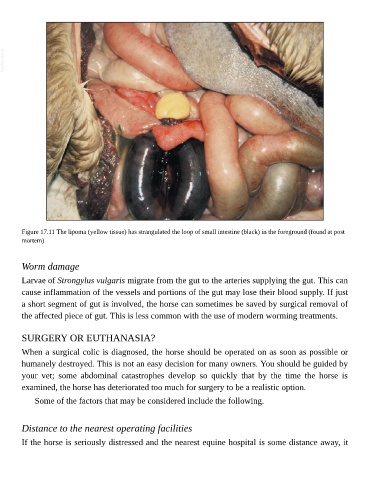Page 773 - The Veterinary Care of the Horse
P. 773
VetBooks.ir
Figure 17.11 The lipoma (yellow tissue) has strangulated the loop of small intestine (black) in the foreground (found at post
mortem)
Worm damage
Larvae of Strongylus vulgaris migrate from the gut to the arteries supplying the gut. This can
cause inflammation of the vessels and portions of the gut may lose their blood supply. If just
a short segment of gut is involved, the horse can sometimes be saved by surgical removal of
the affected piece of gut. This is less common with the use of modern worming treatments.
SURGERY OR EUTHANASIA?
When a surgical colic is diagnosed, the horse should be operated on as soon as possible or
humanely destroyed. This is not an easy decision for many owners. You should be guided by
your vet; some abdominal catastrophes develop so quickly that by the time the horse is
examined, the horse has deteriorated too much for surgery to be a realistic option.
Some of the factors that may be considered include the following.
Distance to the nearest operating facilities
If the horse is seriously distressed and the nearest equine hospital is some distance away, it

